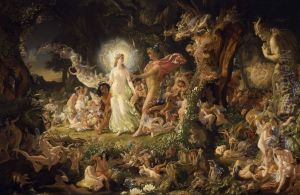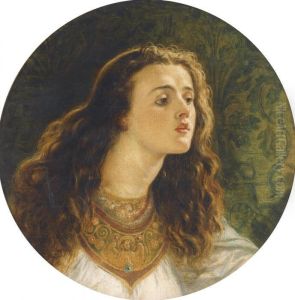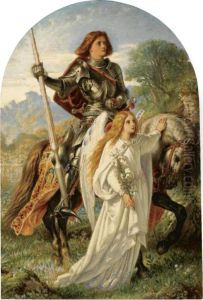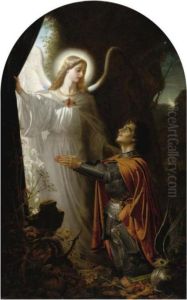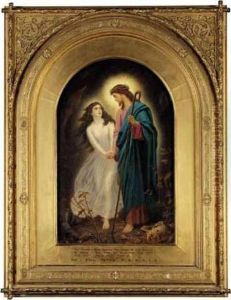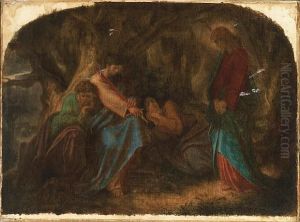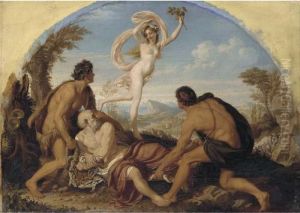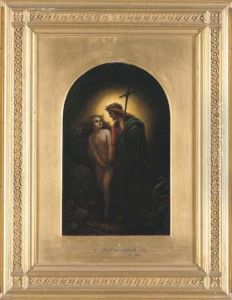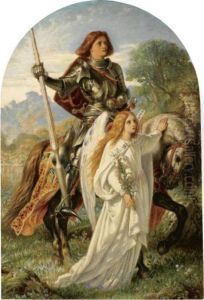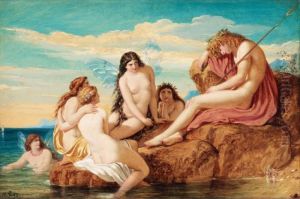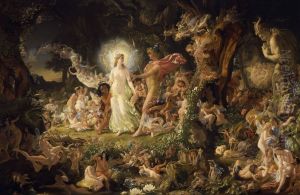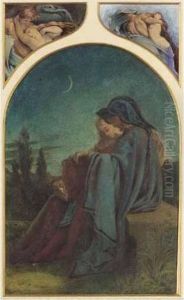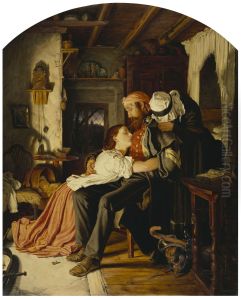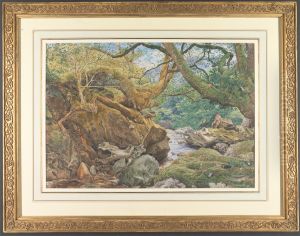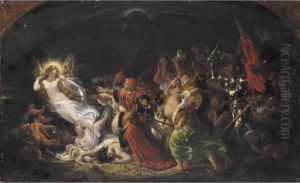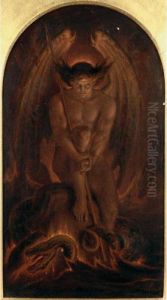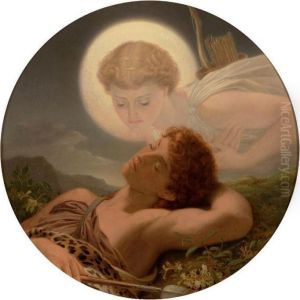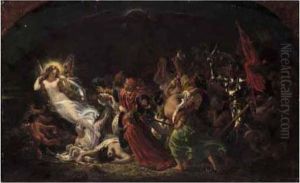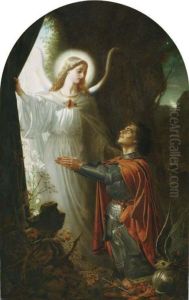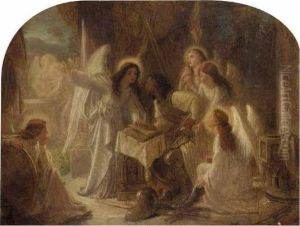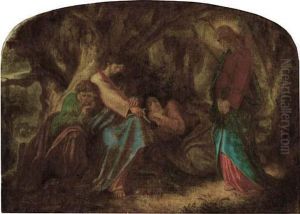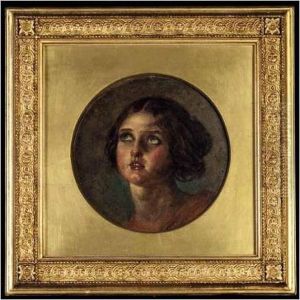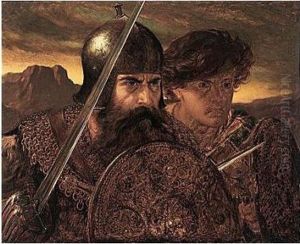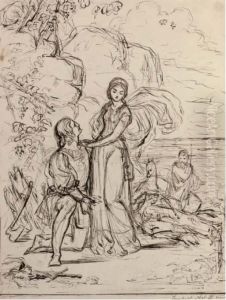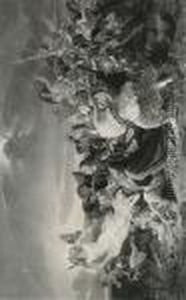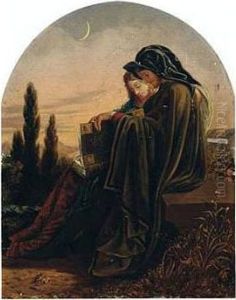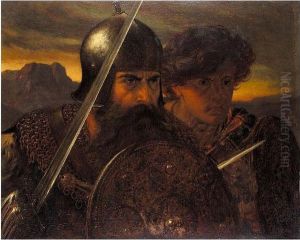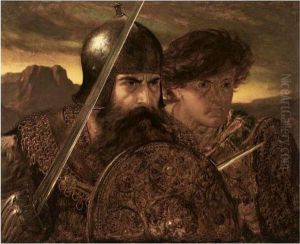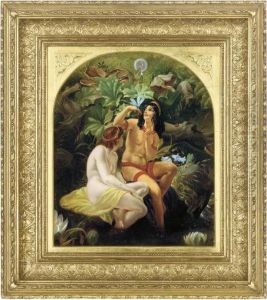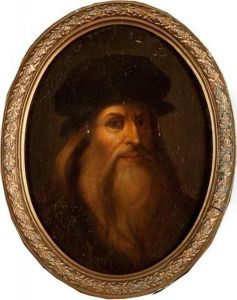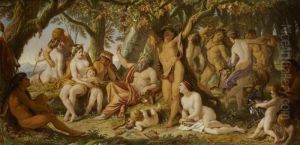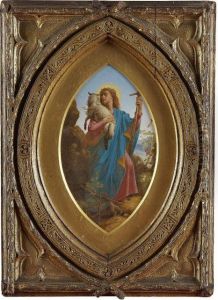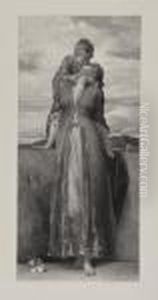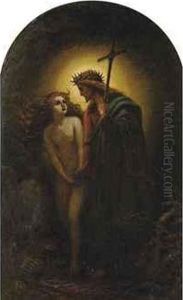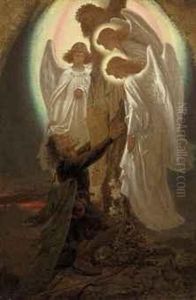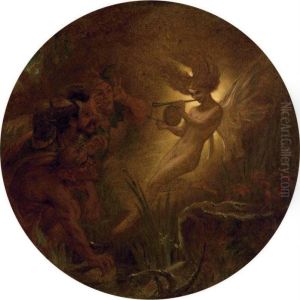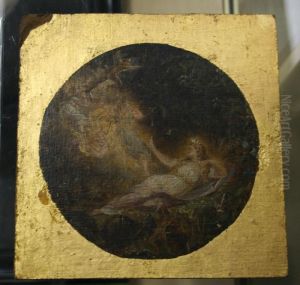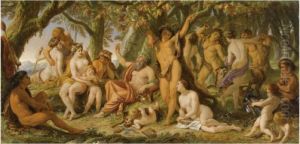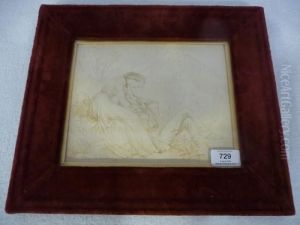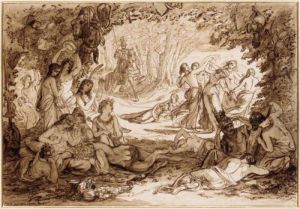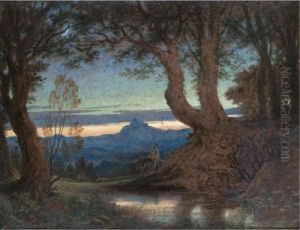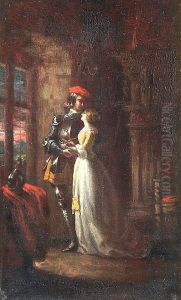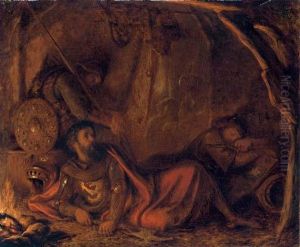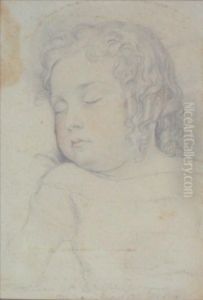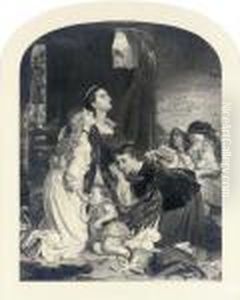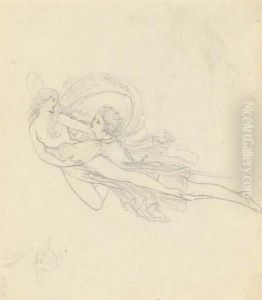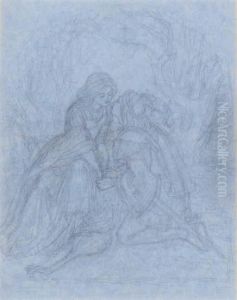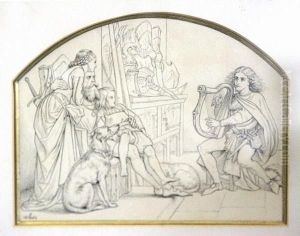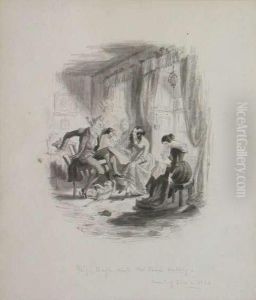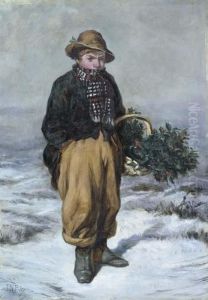Joseph Noel Paton Paintings
Joseph Noel Paton was a Scottish artist, born on December 13, 1821, in Dunfermline, Fife, Scotland. Trained at the Royal Academy Schools in London, Paton became known for his detailed depictions of subjects taken from mythology and fairy tales, as well as his religious themes, particularly those based on the works of Dante Alighieri.
Paton's early work was influenced by the Pre-Raphaelite Brotherhood, a group of English painters, poets, and critics, founded in 1848 by William Holman Hunt, John Everett Millais, and Dante Gabriel Rossetti. The Pre-Raphaelites aimed to reform art by rejecting what they considered to be the mechanistic approach first adopted by the Mannerist artists who succeeded Raphael and Michelangelo. They believed in returning to the abundant detail, intense colors, and complex compositions of Quattrocento Italian and Flemish art.
In 1847, Paton won a prize from the Royal Scottish Academy for his painting 'The Quarrel of Oberon and Titania', a scene from William Shakespeare's 'A Midsummer Night's Dream'. This painting, along with 'The Reconciliation of Oberon and Titania' (1847), is among his most notable works and exhibits the meticulous detail and vibrant colors characteristic of his style.
In addition to his fairy paintings, Paton also produced a significant body of work on religious and spiritual themes. His 'The Bluidie Tryst', painted in 1855, is a powerful interpretation of a scene from Scottish history, while 'Christ Bearing the Cross', completed in 1869, reflects his deep Christian faith.
Paton was also a talented sculptor and illustrator. He illustrated James Ballantine's 'The Gaberlunzie's Wallet' and the works of Robert Burns. In recognition of his contributions to art, Paton was knighted in 1867 by Queen Victoria. He was also appointed Queen's Limner for Scotland from 1866 and held the position until his death. Paton's works can still be seen in galleries across the United Kingdom, including the National Gallery of Scotland and the Tate Gallery.
Joseph Noel Paton passed away on December 26, 1901, in Edinburgh. His legacy lives on through his enchanting paintings that capture the imagination and his devotion to religious and historical subjects.
